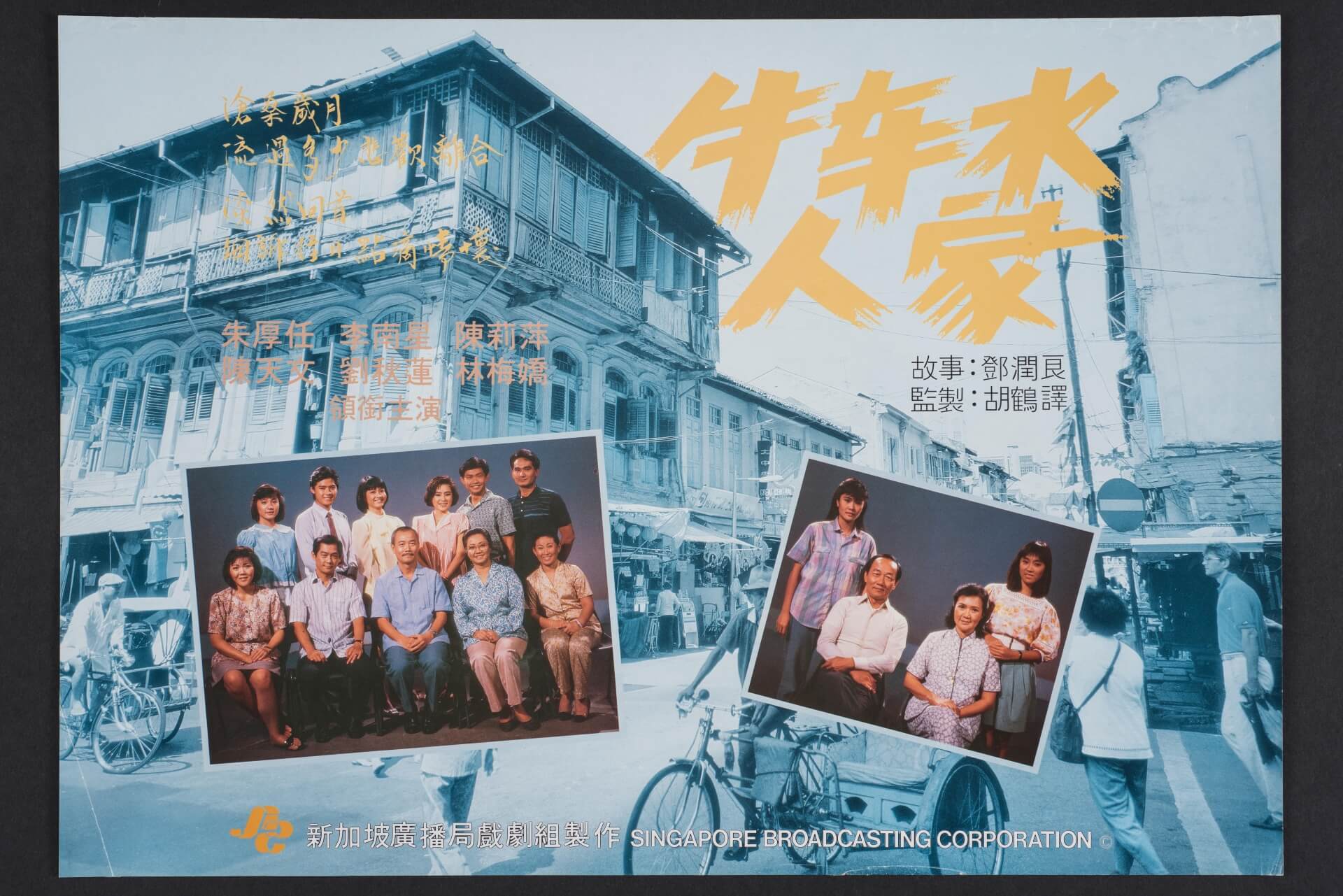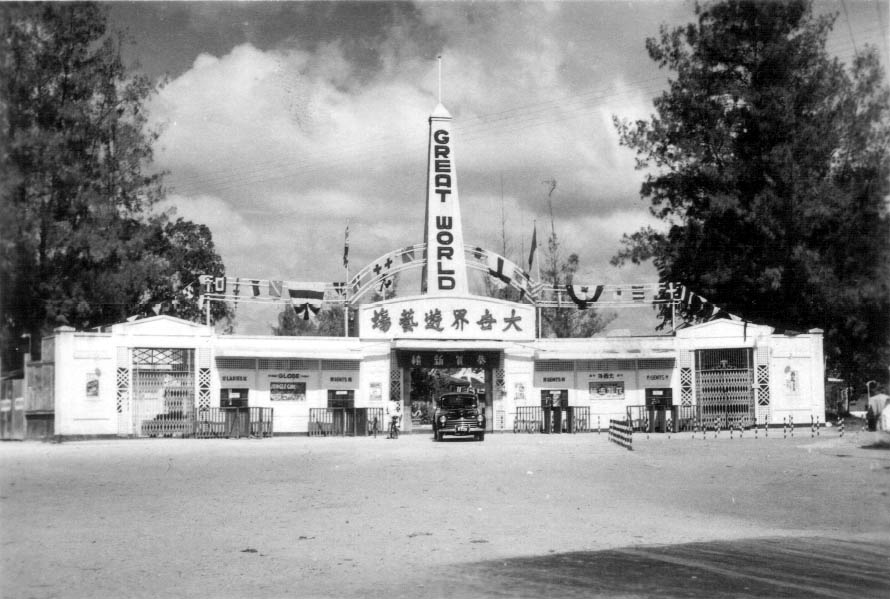Chinese newspapers in Post-war Singapore
In the early post-World War II period, the Chinese community in Singapore experienced a revival. Chinese schools resumed operations, and many Chinese newspapers were republished or newly launched. These post-war Chinese newspapers can be divided into the following stages, according to historical background and other factors.
Post-war: Chinese civil war and peak of local nationalism (1945–1955)
From a historical perspective, the decade after World War II was a period of turbulence for China as it transitioned from civil war to a change in political power. This decade was also a prelude to constitutional autonomy for Singapore, after it regained power from the British colonial government. Nationalism was on the rise and there was a growing aspiration for independence. Politically active journalists expressed their views using newspapers as a platform.
During this period, newspapers varied in their political leanings. Some leaned towards the left, some were anti-communist, others were centre-left or right-leaning, and some had little political overtones. For example, newspapers such as Nanyang Siang Pau, Sin Chew Daily, Wah Kiu Yat Po (Overseas Chinese Daily News), Gong Bao, and Yi Shi Bao claimed to be impartial, but in reality still bore China’s influence. Politically, they leant towards the centre-right or centre-left.
Another category consisted of newspapers with a strong mainland Chinese or local political consciousness, such as Xin Min Zhu Bao, Nan Chiau Jit Pao, Nan Qiao Wan Bao, and Chong Shing Yit Pao.
Newspapers like Nan Fang Wan Bao, Nan Yang Wan Bao, Min Bao (The Chinese Times), and Xin Sheng Ri Bao (The New Life Daily News) attracted readers with their unique characteristics, but had little political consciousness.1

Pre-independence: Shifting political stances among Chinese in Singapore (1955–1965)
In the pre-war and early post-war period, publishers, journalists, and readers of Chinese newspapers in Singapore had a strong mainland Chinese consciousness, which was evident from the language used in their headlines and commentaries. During this time, terms like “motherland”, “our country”, and “national flag” referred to China. However, after 1949, there was a significant shift in China’s political ideology. Overseas Chinese came under scrutiny during a series of political campaigns such as the Three-Anti and Five-Anti Campaigns.
The Chinese Communist Party government also encouraged overseas Chinese to settle down and be loyal to the local government. As Singapore gradually moved towards autonomy and independence from the 1950s onwards, the Chinese community began to fight for citizenship rights under the leadership of the Singapore Chinese Chamber of Commerce.
During this period, Chinese-language newspapers gradually shifted from being pro-China to encouraging loyalty to one’s country of residence. Newspapers actively supported the citizenship rights movement, encouraging readers to register as voters and consider their place of residence as their primary homeland. They also began to pay attention to and participate in local politics.
Post-independence: Decline in Chinese-language education (1966–1982)
In 1965, after separating from Malaysia and becoming an independent nation, Singapore actively pursued educational reforms by implementing a policy of bilingualism. Chinese-medium schools began to decline, along with readership of Chinese-language newspapers. As a result, the Chinese newspaper industry gradually shifted from confidence to concern. The rise and fall of the Chinese language and Chinese-medium education became a source of worry for the Chinese press and the Chinese community.
During this period, Shin Min Daily News was founded in 1967. The newspaper was jointly set up by local businessman Leong Yun Chee (1897–1971) and the well-known Hong Kong journalist, Jin Yong (Louis Cha Leung-yung, 1924–2018). The newspaper focused more on social news, and was presented in a lively, relaxed way. Its supplements also featured martial arts novels by Jin Yong, which made it quite popular among the general public. Its sales volume could even rival that of newspapers like Nanyang Siang Pau and Sin Chew Jit Poh.
In the 1970s, the Singapore government implemented a policy promoting the use of simplified Chinese characters. As a result, newspapers like Nanyang Siang Pau and Sin Chew Jit Poh gradually transitioned to using simplified Chinese characters, which they fully adopted by the 1980s. In 1979, both newspapers also switched to horizontal Chinese script, marking a historic reform. On 15 March 1983, the long-standing Nanyang Siang Pau and Sin Chew Jit Poh were merged under government guidance to form the Nanyang-Sin Chew Lianhe Zaobao. At the same time, Lianhe Wanbao was published, ushering in a new chapter for Chinese-language newspapers.
Modern period: Chinese newspaper industry opens up a new landscape (1983–2023)
In the 1980s, amid a backdrop of rapid change in the international environment, society in Singapore continued to evolve. The language reforms implemented in the early 1950s began to show their effects. Chinese education experienced a decline, Chinese-medium schools became history, and the readership of Chinese newspapers continued to shrink.
Chinese newspapers struggled to survive. Under government guidance, the Chinese and English newspaper industries were integrated to establish Singapore Press Holdings. After pooling resources, Lianhe Zaobao, together with Lianhe Wanbao and Shin Min Daily News, took on the mission of building cohesion in the Chinese community, promoting the Chinese language and imparting Chinese culture.
To achieve this, the three newspapers focused on traditional journalistic quality, ensuring professionalism in news reporting and diversity in supplements. But they also engaged in Chinese literature, art, and cultural activities. This included organising literary camps, the Golden Lion Awards, and hosting Chinese book fairs, Chinese cultural festivals, and other projects.2
In 1995, Lianhe Zaobao launched its digital edition, becoming one of the earliest Chinese newspapers worldwide to go digital. This expanded its market to China and established its presence beyond Singapore.3 In 2021, Lianhe Wanbao merged with Shin Min Daily News, and the unified newspaper was sold under the name of Shin Min Daily News.
Compared to before the war, there are fewer Chinese newspapers in Singapore today. But in terms of quality, today’s newspapers surpass their predecessors. In the face of the decline of Chinese education and shrinking readership, Chinese newspapers that survived managed to cultivate new generations of journalists. In an era where the influence of social media is becoming increasingly significant, the establishment of the government-led SPH Media Trust in 2021 is the Singapore government and civil society’s recognition of the contributions of the Chinese newspaper industry.
This is an edited and translated version of 战后新加坡华文报章. Click here to read original piece.
| 1 | Choi Kwai Keong, Xinjiapo huawen baokan yu baoren [Singapore Chinese newspapers and journalists], 156–159. |
| 2 | Quek Sy Mung, ed., Women: lianhezaobao koushulishi [Our story: An oral history of Lianhe Zaobao], 184. |
| 3 | Quek Sy Mung, ed., Women: lianhezaobao koushulishi, 184. |
Choi, Kwai Keong. Xinjiapo huawen baokan yu baoren [Singapore Chinese newspapers and journalists]. Singapore: Hai tian wenhua qiye, 2007. | |
Choi, Kwai Keong. “Xinjiapo huawen ribao xianzhuang” [The current state of Singapore Chinese daily newspapers]. In Dongnanya huawen ribao xianzhuang zhi yanjiu [Research on the current state of Chinese daily newspapers in Southeast | |
Quek, Sy Mung, ed. Women: lianhezaobao koushulishi [Our story: An oral history of Lianhe Zaobao]. Singapore: Lianhe Zaobao, 2023. |










